Star Wars Publishing Is Taking An Exciting Plunge Into The Unknown
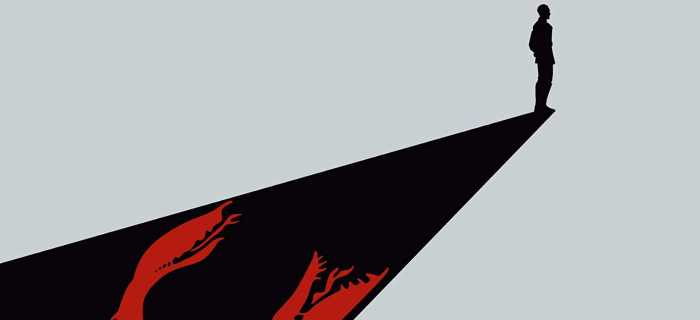
In 2013, Disney and Lucasfilm restarted the Star Wars universe, leaving only the six films and The Clone Wars television series (2008-2020) as canon. All other Star Wars material were labeled as “Legends” and shifted into their own separate universe. This decision gave Disney and Lucasfilm a vast storytelling canvas that left the studios unburden by some of the expectations and restrictions that had developed with more than forty years of books, comics, and video games.
One of the promises Lucasfilm made when discussing the 2013 canon reset was to give “maximum creative freedom” to storyteller. Lucasfilm has ultimately struggled to remain true to this promise for a variety of reasons. While there has been a host of new Star Wars novels, television shows, and films, many of these projects ultimately tread familiar ground by focusing on the time periods and characters familiar to longtime fans. In the mid 2010s, If a book did not synergize with the ongoing sequel trilogy (2015-2019), then the novel or comic likely focused on character present in original Star Wars trilogy or prequels. While many of these stories are excellent, they do not embody the concept of “maximum creative freedom” that Lucasfilm boldly proclaimed during the continuity reset.
After years of struggling to find deliver more ambitious projects, 2020 and 2021 became the years that Star Wars publishing finally seemed to stretch itself beyond the familiar. Two crucial projects, The High Republic and The Ascendancy Trilogy, set the stage for massive expansions to the Star Wars universe. The High Republic, a enormous multi-book project, envisions a completely new era within the Galaxy Far Far Away; a past unburdened by previous Star Wars storytelling. Similarly, The Ascendancy Trilogy challenged its audience by focusing on unexplored regions of the galaxy, introducing new alien species, and exploring a dense political structure of the Chiss people. Taken together, these two projects illustrate that Star Wars is finally delivering on its promise of “maximum creative freedom” that Lucasfilm discussed in 2014, as well as providing diverse reading options for Star Wars fans.
The High Republic Dives Into The Past
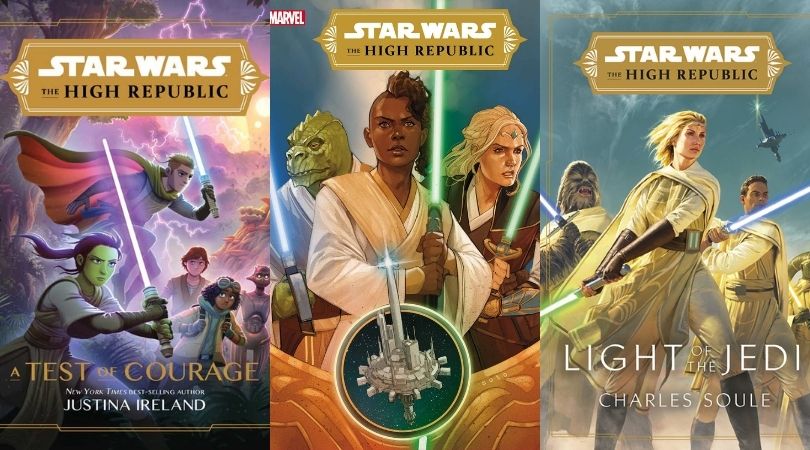
Currently set two hundred years before Episode I – The Phantom Menace, The High Republic is one of Lucasfilm’s most ambitious publishing initiatives. Originally codenamed “Project Luminous,” The High Republic initiative is made up of “multiple voices in adult and young adult novels, children’s books, and comics” (Star Wars.com). With novels and comics written by a talented group of authors including Charles Soule, Daniel Jose Older, Claudia Gray, and Justina Ireland, The High Republic is the most diverse Star Wars project yet. In an interview for Star Wars.com, Lucasfilm Publishing creative director Michael Siglain, describes the The High Republic project as “a massive story, told across multiple formats over multiple years, for every type of fan”. This ambition stands in contrast to the previous Lucasfilm publishing novels, which were largely relegated to telling stories that fill in the gaps for films and television shows.
One of the key goals of The High Republic is to depict a wild galaxy that is quite different from the one seen in Episodes I-IX. Unlike in the films, where much of the galaxy has been settled and explored, The High Republic era is a time of “galactic expansion in the Outer Rim,” where the galaxy is a far less connected place. Exploration is a core connective theme across The High Republic‘s middle grades, young adult, and adult content. Many of the protagonists of The High Republic novels and comics are setting foot on unknown or unfamiliar frontiers, or they are coming into contact with new worlds and cultures. Key adult novels like Light of the Jedi by Charles Soule and The Rising Storm by Cavan Scott explore a Galactic Republic that still confronting the question of how to integrate the Outer Rim into its society and politics.
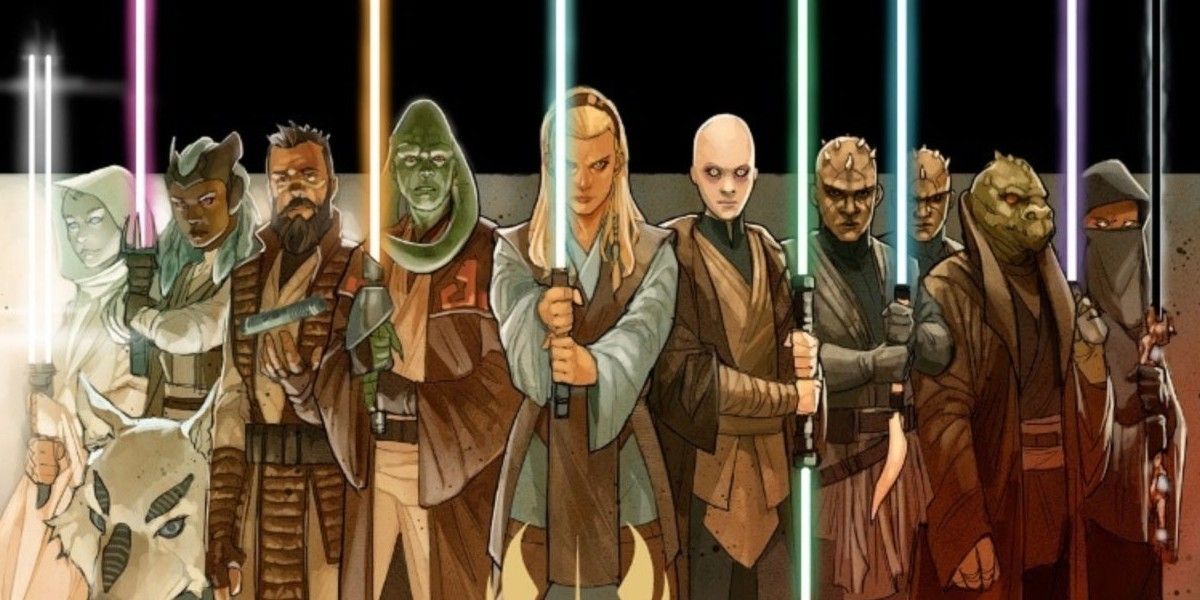
Another goal of The High Republic is to highlight the Jedi Order “at their zenith,” with the Jedi Order acting as “true guardians of peace and justice” (Star Wars.com). So far, the team of writers have succeed in depicting the Jedi Order as a organization that is far more adventurous than the order seen in the prequel era. Characters like Elzar Mann, who struggles with the dark side of the Force, are foils for Anakin Skywalker and his destructive journey in the prequel films. Mann’s struggle with the dark side and Jedi life are treat with more compassion and openness than Anakin’s, which is a sign of how different the Jedi Order is two hundred years before Anakin’s time. One of the biggest new additions to Star Wars lore is the vivid ways that Jedi of The High Republic perceive and connect with the Force. The Force manifests itself in far more individualized ways for Jedi of this era. The unique connection that each Jedi has with the Force fosters more diverse ways of understanding the galaxy. For example, Jedi Master Avar Kriss, one of the key protagonists of the flagship High Republic novel Light of the Jedi, understands the Force as music; a vast symphony that connects the universe.
In addition to the distinct ideology of the Jedi during this era, The High Republic also introduces two intriguing new antagonists: the Nihil and the Drengir. The Nihil are ruthless bands of marauders who wish to cause chaos across the galaxy. Loosely lead by the mysterious and Machiavellian Marchion Ro, The Nihil use advanced knowledge of Hyper Space routes to attack vulnerable planets and systems. A massive group of interconnected clans and gangs, the Nihil are more erratic and chaotic than organized military forces like The Separatists or The Empire. In deep contrast to the Nihil, the monstrous Drengir are a plant-like carnivorous hive-mind with the ability to infect its victims. Stealthy introduced in Claudia Gray’s excellent young adult novel Into The Dark, the Drengir have the ability to regenerate quickly. This power help makes the Drengir a potent enemies for the Jedi and Republic. While the Sith may be lurking somewhere unseen in The High Republic era, the Nihil and Drengir have helped set the stories of The High Republic apart from the other Star Wars stories.
The Ascendancy Trilogy Explores A Weirder, Wider Universe
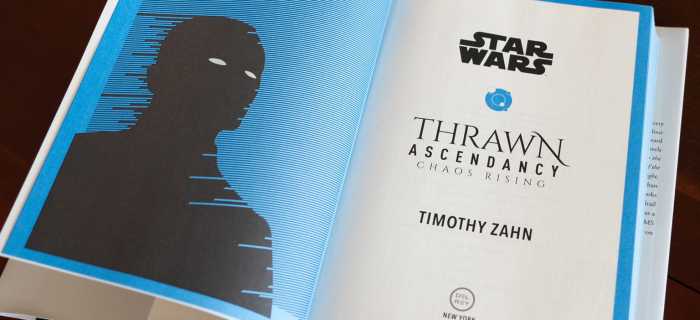
Much like The High Republic, The Ascendancy Trilogy has proven to be an ambitious and unorthodox Star Wars project. The Ascendancy Trilogy explores the rise of brilliant Chiss tactician Mitth’raw’nuruodo, known more commonly as Thrawn, who has been hugely popular in the Stars Wars extended universe since his debut in 1991’s Heir To The Empire. The trilogy is written by Thrawn creator Timothy Zahn, who also wrote a three Thrawn novels when the iconic character was reintroduced in the animated show Star War Rebels. The Ascendancy Trilogy consists of Chaos Rising, Greater Good, and Lesser Evil, which were released between September 2020 or November 2021. Unlike Zahn’s previous canon Thrawn novels (Thrawn, Thrawn: Alliances, and Thrawn: Treason), which were all completed as separate projects, Zahn’s latest project was developed as a trilogy. This means that there are characters and story arcs that develop smoothly over the course of three books.
The Ascendancy Trilogy is set outside of the known galaxy, something that the current canon has largely avoid thus far. The trilogy takes place in the Unknown Regions, an area that is “chaotic, uncharted, and near impassable, possessing hidden secrets” (Zahn). Because of its place on the edge of the galaxy, the Unknown Regions (known as “The Chaos” by those who inhabit it) is largely “unaffected by the rise and fall of the Galactic Republic” (Liptak). While the trilogy focuses on the Chiss, a race of blue-skinned humanoids who serve as the central power within the region, the trilogy also introduces readers to a diverse group of alien species with distinct political and moral outlooks.
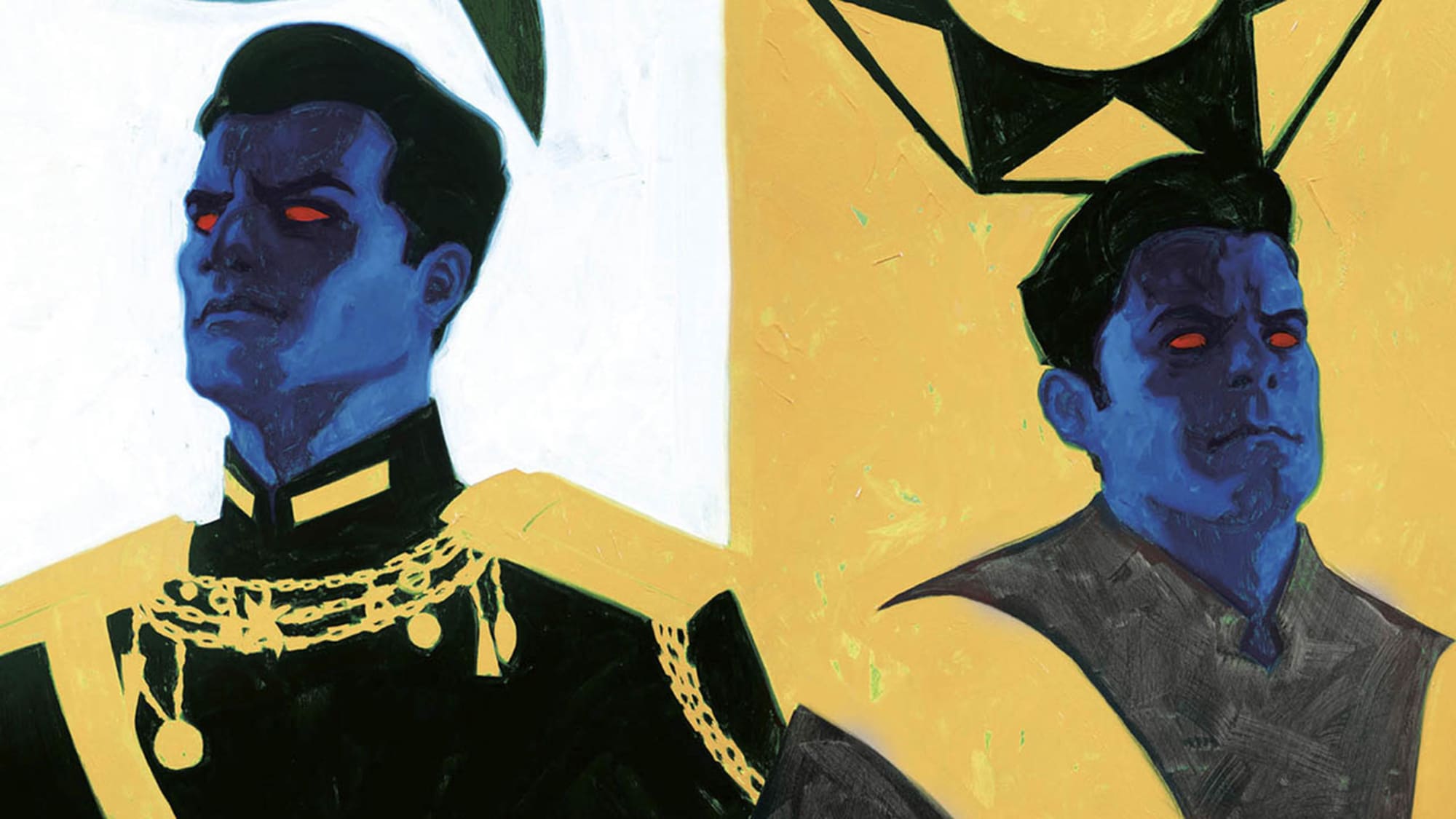
One of the core concepts that sets The Ascendancy Trilogy apart from other Star Wars content is the sheer complexity of Chiss society and politics. The complexity of Chiss culture, including its fluctuating and nuanced naming conventions, has proven to be divisive among reader and reviewers, but this structure also defines key character relationships and plot points within the trilogy. The Chiss Ascendancy consists of a vast network of “families”, which serve more as political organizations than true families. Individuals within the key Chiss families like the Mith and Irizi rise and fall based on family politics and their wider achievements. Overall, the elaborate nature of Chiss culture makes the trilogy a more cerebral read than many of the fast paced Star Wars novels.
The Ascendancy Trilogy details the rise of future Imperial Grand Admiral Thrawn, who received an ominous name drop in Season 2 of The Mandalorian, but it also introduces a vast array of Chiss characters and other alien species. The trilogy builds off ideas first presented in Thrawn: Alliances and Thrawn: Treason, though it is not necessary to read any previous Thrawn novels to understand the narrative. Skywalkers, young Chiss girls who use the Force (called the “Third Sight” by the Chiss) to navigate ships through the turbulent Unknown Region, are a key part of the trilogy. Jixtus, the shadowy antagonist of the trilogy who sows chaos across the Unknown Region, is a member of The Grysks species. These ruthless, conquest-obsessed aliens were key threats in Thrawn: Alliances and Thrawn: Treason. This set of heroes and villains feel vastly different from the Jedi or Sith, which helps the trilogy carve out its own identity.
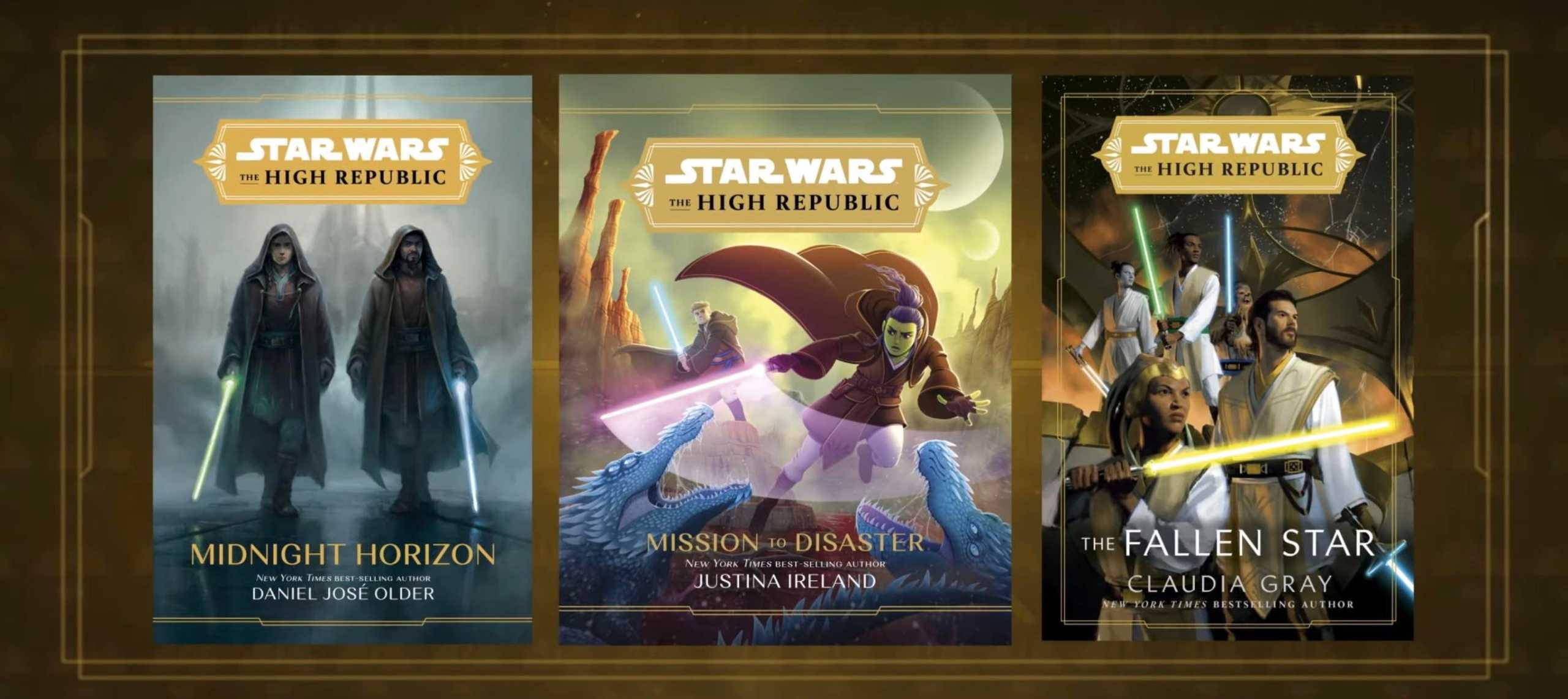
In addition to the new time periods and areas explored, The High Republic and The Ascendancy Trilogy also fit into a variety of genres as well. Claudia Gray’s young adult novel Into The Dark taps into the horror genre with its abandoned space station and monstrous plant monsters. The core adult High Republic novels Light of the Jedi, The Gathering Storm, and The Fallen Star are high octane thrill rides that pay tribute to the disaster and thriller genres. Finally, The Ascendancy Trilogy delivers a strong dose of political intrigue as its characters struggle to navigate the complexities of Chiss social structure.
Overall, it is a great time for new or returning fans to explore Star Wars novels and comics. With The High Republic and The Ascendancy Trilogy, Stars Wars writers are exploring exciting stories filled with new characters and unique worlds. With diverse sets of characters and narratives that buck some of Star Wars‘ long held traditions, these stories set a new high watermark for Star Wars publishing. Whether you enjoy middle grade novels, young adult novels, comics, or more traditional Star Wars novels, there is something available for every reader.
Work Cited
“The Legendary Star Wars Expanded Universe Turns a New Page.” StarWars.com, https://www.starwars.com/news/the-legendary-star-wars-expanded-universe-turns-a-new-page.
“The High Republic.” StarWars.com, https://www.starwars.com/news/star-wars-the-high-republic.
Brooks, Dan. “The High Republic Interview.” StarWars.com, 21 Dec. 2020, https://www.starwars.com/news/star-wars-the-high-republic-interview.
Liptak, Andrew. “Timothy Zahn Has Returned to Thrawn.” Polygon, Polygon, 3 Sept. 2020, https://www.polygon.com/star-wars/2020/9/3/21408128/star-wars-books-thrawn-ascendency-chaos-rising-timothy-zahn-interview-thrawn-trilogy.
Patches, Matt. “Timothy Zahn Prepares Us for the End of the Star Wars: Thrawn Ascendancy Trilogy.” Polygon, Polygon, 9 Nov. 2021, https://www.polygon.com/22770279/star-wars-thrawn-ascendancy-book-3-lesser-evil-timothy-zahn-interview-excerpt.
Zahn, Timothy. Thrawn Ascendancy: Chaos Rising. Del Rey, 2020.
What do you think? Leave a comment.











But are they be as good as Splinter of the Mind’s Eye?
Light of the Jedi was an exceptional Star Wars story. Charles clearly understands what makes Star Wars have that feeling. All the characters were so likeable as well.
Fascinating. The Ascendancy trilogy are my favourite Star Wars books, largely because of the intricacies of Chiss families and politics. I loved keeping track of who’s who and how they connected to each other.
I think I like the first cannon trilogy better. This is because we actually got to see things from Thrawn’s prospective instead of just people from the outside prospective. My favorite parts was when you got to see Thrawn’s annalist mode. That made him seem truly terrifying in my eyes. While I still enjoyed this trilogy I just wish we had at least some scenes from his prospective. (I also like the Cannon side more than the Legends side of Thrawn).
I had to take notes to keep track of families feuds and alliances. I had never done that with any book. It was so much fun.
As did I. It was exactly what I hoped the end of the Thrawn Ascendancy trilogy would be. Infact the whole Thrawn Ascendancy trilogy lived up to my enthusiasm and beyond.
I immensely enjoyed the Thrawn trilogy. I hope we see more of the characters in future projects. I also hope that Thrawn’s characterization is more sympathetic in live-action and less-pure-evil-big-bad-wolf type of character.
I’m not crazy about how Thrawn was portrayed in Rebels. They made him too “evil” so to speak. I very much prefer him in the books. Even when you know on the grand scheme of things that what he’s doing is bad you don’t really feel like he’s a bad guy. Rebels made him a bit too mustache twerlly at times. I get it’s technically a kids show and easier to have that kind of villain I just don’t think it matched his character.
There is definitely a divide between how he is portrayed by Zahn vs. in Rebels. But I also feel like Rebels Thrawn is a bit of a throw back to the Thrawn in the originl Legends “Thrawn Trilogy” from the 90s. Both versions are a bit more clearly a villain than the current version of Thrawn in books. I do like some of the small moments of ruthlessness in Rebels, those moments are great.
Yes he was very cold and just plain cruel at times. I feel they also treated thrawn in rebels almost felt like a throw away character too. I feel the show should have ended with thrawn killing them (ghost crew and friends). He just turned into another villain. They never suffered a real loss to thrawn. It feels like a waste, to get rid of a character like that in a kids show. I hate plot armour sometimes. I honestly feel like they got Vader in that show wrong too. After the twilight of the apprentice Vader just disappears. I feel like Vader wouldn’t have chasing them. And the first time he encountered Ezra and Kanan they should have both died. The treated both thrawn and Vader like throw aways. They did the same thing to grievous in early clone wars.
Would you recommend for someone who’s never read anything thrawn related except watch rebels read this first or the other canon thrawn series first?
I would recommend the Thrawn 2017 novel first. This book reintroduced Thrawn into Canon, and it does a great job of explaining who he is. Also, it is one of the best books about the character. If you read that book, it will probably be easier to understand the ascendancy trilogy. https://starwars.fandom.com/wiki/Thrawn_(novel)
Thrawn Alliances wasn’t the best but I personally really enjoed Thrawn Treason.
I’m the opposite. I felt Thrawn Alliances was a blast except for the Padme bits which slowed down things. It was great and interesting to see the Thrawn-Anakin and Thrawn-Vader dynamic especially with how Vader pretty much has a gun to Thrawn’s head if he does the wrong thing.
Treason I thought was a real letdown because Thrawn was never truly challenged in that book, the Grysk threat still felt hollow and the ball is pretty much in Thrawn’s court in every chapter. It never gives you the impression that he might lose out on anything. Krennic’s lackey was just plain annoying. The prose being easy to read was the only real highlight of that book, imo.
What did you think of the ending of chaos rising?
Personally I liked the book, although of course there’s the issue of it being a prequel so we know the ending. At least here Zahn has enough wiggle room since, at least for the moment, there isn’t anyone else creating content regarding the Unknown Region. That alone is a breathe of fresh air, being so different from what we are used to.
I really enjoyed all three of ascendancy trilogy, but Chaos Rising is my favorite. General Yiv was a suitable opponent for Thrawn, and the new characters like Thalias and Thurfian were developed.
I love the old Thrawn books but these new ones just bore me to death. I don’t find any of the characters interesting and am convinced I’m reading a different book than everyone else.
The high republic is the best thing to come out of Star Wars since the sequel trilogy I can safely say that this is the best series. For canon that is Star Wars legends will still be my favorite Star Wars.
I thought Timothy Zahn’s novels were really good. Granted, I was a teenager at the time, but the stories were decent.
Thrawn Ascendancy Chaos Rising is great. I cannot recommend the audiobook enough. Marc Thompson is incredibly talented.
Just finished the audiobook.
Ive read all the other Thrawn books, so this was ok, not a bad book. There’s no stakes at all really, and it has terrible paving issues honestly I got confused where we were at each jump from memory to future.
I am listening to the audio book. But what is a Skywalker or former Skywalker? Anything to do with Luke?
The name is just Zahn messing with fans, a skywalker is a young chiss girl who can use the force to guide a ship through difficult hyperspace passes in the unknown regions. Just like the pathfinder Qilori of Uandualon they can also track others through hyperspace. These skywalkers are the greatest secret and asset of the ascendancy, so Thrawn got Thalias (a former skywalker and now carer) and Che’ri captured by Yiv so he could go after them with the ascendancy’s full backing and resources. In Thrawn: Treason, we see Van’hya (another skywalker) who has mastered third sight (the hyperspace ability and second sight (force telekinesis) to the age of 22. Normally the abilities die at about 13/14, so that’s why Eli vanto was sent to Ar’alani, to try and analyse what was different about her.
I guest those Skywalker’s and their ability are not canon, even though Thawn might appear in the next Mandalorian chapter… Would be a nice addition!
I think part of the difference between Ascendancy Thrawn and Rebels Thrawn is that Governor Pryce’s actions at the end of Star Wars: Thrawn has given him a particular reputation that he begrudgingly has to live up to, so by the end of rebels he has no choice but to leverage that reputation to bluff Ezra into surrendering.
Also, the Empire runs by a different set of standards than the Chiss, but I feel that Thrawn has always been capable of ruthlessness if the situation requires it. He is a warrior and tactician, and some battle require difficult choices.
My brother loves the Thrawn books and sees him as a Hero. I like ’em but I know well that Thrawn is a Villain. Maybe he didn’t start out, chronologically, as a villain, but whether its the events of this trilogy or his dealing with palpatine, something made him A Villain. He’s a good villain, a frightful antagonist if your against him. No matter what he’s doing in Ahsoka, he’ll likely be The Villain. and that is something book thrawn fans need to be ready for.
Finished Lesser Evil yesterday, and I think it might have been my favorite of the three! The two things I tend to like best in stories are 1) time with my favorite characters & getting to see quieter, deeper, character/relationship moments, and 2) details my lore-hound brain can sink its teeth into. Lesser Evil delivers on both counts, so I loved it!! Chaos Rising I enjoyed for the same reason, Greater Good not so much because while I find the world-building of Chiss politics interesting, I don’t find it particularly compelling, and felt we didn’t spend enough time with my favorite characters – or rather, we spent a lot if time with characters I didn’t particularly like. Regardless, I have enjoyed all the new canon Thrawn novels (and all the Legends ones I have read) and I enjoyed the way Lesser Evil set up potential future plot points.
I’ve loved this trilogy! This is part of what Star Wars is for me!
I´ve only listend to the audiobooks, and I have to say, its funny how he pronounces some of the names. Like the Skywalker, his pronounciation sounds more like cherry than in the audiobook, where its more chiry (emphasis on the I sounds). Just always interesting to see how different people pronounce the same word.
Haven’t dug into the High Republic books yet but this is the first really intriguing thing to come from the new canon so far in my opinion. Not just because it’s a new story in the new canon but also not a story or era that was really covered in the EU either. That and the (seeming) lack of Skywalker connection makes it appealing.
It’s a totally fresh take on Star Wars!
I personally enjoyed all canon Thrawn books. I mostly just read the books for lore that they give to the Star Wars universe, which is mostly why i liked the Aftermath books, and Chaos Rising was phenomenal at giving us more lore.
Something about The Light of the Jedi cover illustration makes me really unexcited. Maybe it’s that both human characters look like news anchors.
It makes me more excited, maybe it’s because you get more jedi and they look cool as hell.
Interesting! As a fan of Star Wars who never delved into any of the books, I’m now really keen to give them a go – thank you for opening my eyes to them!
I love Thrawn. I want as much Thrawn as I can get.
I just finished reading the Thrawn books (I’m reading them all chronologically) and there is a vast difference in the books in how rebels are portrayed.
I don’t have an issue with the thrawn in rebels v book thrawn. Rebels Thrawn had the Darth Vader and the emperor breathing down his neck for his failure at Atilon, and thrawn tells us the empire maybe necessary for the greater good despite a few missteps here and there. So bombarding the rebels on lothal is just another necessary misstep to ensure the he can remain part of the empire to protect his people.
While I love Rebels. I am not too fond of how they portrayed him.
Nice article. I’ve listen to quite a few Star wars podcasts/youtube channels and very few have loved much of the new Thrawn books, but Zahn must be doing something right because I was thinking about it the other day and so far as I know no other non-skywalker character has had 4 new canon books covering them, with at least 2 more on the way.
I know he’s kinda handcuffed by the end of rebels and so far can’t tell stories beyond it (which I’m hoping is being saved for a live action disney + show with him and Ezra returning) but I think he’s done a great job.
Have been thinking about giving the High Republic books a chance for a while. If it really is as good as the bane books then I can’t wait. The bane trilogy and the plagueis book are my all time favs.
I have never read a star wars novel (nor comic as comics are not my thing.) So I decided to give it a go. I found a link to an extended read; 7 or 8 chapters of The High Republic. I went through those chapters so fast that I went & bought it to download on my phone’s Kindle app. I love reading physical books so for me to not want to wait a couple of weeks for it to ship says much. I’m quite enjoying my imagination picturing everything as I read it!
I have always been a big fan of the old EU, mostly because the books/video games/comics etc. told their own stories. Most of the best examples weren’t just supplementary material for the movies. From what I’ve read of the Disney-era material, the problem is exactly what this article pointed out: that the creators have been hamstringed by the Canon in a way they weren’t before. No story can feature a real event with big stakes or consequences for their characters, because why have something big happen in a book or comic only some people will read when that something big could happen in a movie or show that more people will see? The biggest example of this for me is the scene from the Vader comic where it’s heavily implied that Palpatine had a personal hand in creating Anakin out of the Force, which is an idea that Revenge of the Sith implies itself and older works did as well. But when fans started to praise the comic for this, Disney backtracked by saying this wasn’t the comic’s intentions. Perhaps it’s just my opinion, but this and numerous other examples I’ve read seem to follow this trend. Hopefully, now that Disney is allowing their creators to tell stories outside being supplemental material or direct tie-in to a movie, like the High Republic, the stories will get better than what has been written previously.
For something like an expanded universe, you would have to have at least an idea of what that would look like ahead of time. Tolkien’s world in the Lord of the Rings springs to mind as an archetype.
I disagree. The old Star Wars EU was comprised of different books, comics, games, etc. by different authors who weren’t accountable to each other. The only person anyone was accountable to was George Lucas himself, and even then the only real restriction he put on these creators was that no one could create any content about the era that would be the setting of Lucas’ Prequel Trilogy. It’s directly BECAUSE there was no overarching plan or story for these creators to adhere to that they had the freedom to explore new ideas, characters, and situations that Lucas wouldn’t have thought of himself. It’s true that this freedom sometimes resulted in content (especially certain novels) that were just flat out bad, and the community treated them as such when they consumed them. But it also led to stories and projects that became lasting fan favorites as well as critically-acclaimed in their respective genres, such as the award-winning “Knights of the Old Republic” video games or Timothy Zahn’s Thrawn Trilogy (which was so popular that Disney hired Zahn to resurrect his characters for their canon). Admittedly, sometimes the lack of communication resulted in different authors getting in each other’s way when it came to the adventures or fates of characters. The author who wrote an adventure where Luke and friends battled a leftover Imperial warlord in a small corner of the galaxy, for example, had no idea that another author would pen a comic where Chewbacca died saving Han Solo’s son’s life from an exploding moon. Even the Yuuzhan Vong War, a 23-part saga where the entire Star Wars galaxy finds itself at war with an alien invasion from another galaxy and which features the deaths of several major characters, was contributed to by many, many different authors who were not accountable to each other. The strength (and weakness) of the old EU was this loose set of guidelines when it came to continuity.
Compare that to the current Lucas Story Group (the Disney/Lucasfilm entity responsible for maintaining canonicity in Star Wars), where every new project has to fall within rather strict rules about its setting, characters, and the outcome of the story, and the difference is night and day. I would argue the overall quality of the current Disney-era canon suffers as a direct result of this. Tolkien would fall similarly into this category. All of the content of the Tolkien canon was penned by Tolkien or his son Christopher (who was largely just fleshing out material by his father in the first place). Not at all like the old Star Wars EU.
I’m reading light of the Jedi rn and I’m loving it. This is actually rly good for star wars.
I love these canon books, Thrawn is one of my fave characters within Star Wars!
I am tempted to read the legends Thrawn trilogy next as I have just finished the cannon books. But I think Thrawn works best as an anti-hero rebels might have gone too far as a moustache-twirling villain because it is a kids show but at the same time, he is set up as the personification of a competent empire i.e religious fanaticism, corruption, and infighting. Take your pick of beloved Roman emperors even though the punishments were harsh they were seen as fair and its my understanding that the original used the battle of Yavin and its aftermath as an opportunity for Thrawn to build that vision of an empire that earnt voluntary loyalty, hence anti-hero by presenting a serious conflict in terms of the moral justification for the rebellion/New Republic. As some even suggest that he ultimately failed due to the emperor’s influence in preparation for the dark empire storyline.
I wonder if Disney is paying royalties to Timothy Zahn for his books.
Thrawn alliances and treason were my 2 favorite thrawn books of the 7 I’ve read.
I hope the new movies are in the Unknown Regions!
Currently reading through alliances and I’m enjoying it a lot. I don’t usually read books (more manga and comics etc) but the Thrawn novels have really captivated me.
Thrawn feels completly wasted in canon. Only way to save him is to have him come back after rotj and lead the imperial remnant after jakku (the ones that didn’t join admiral slone).
I feel the Star Wars franchise is constantly being reinvented to gain new fans and make better profits for the film and publishing industry. The introduction of ‘The High Republic’ and ‘The Ascendancy Trilogy’ projects explores new aspects of the original Star Wars story and seems like offshoots that don’t have the same structure and “maximum creative freedom” as the first trilogy of films. In conclusion, perhaps we should remember George Lucas’s Star Wars franchise for the entertainment and storytelling which came along at a time in history when people needed to experience something different and unique.
I did not know about these Star Wars series. Very informative.
I don’t recall where LucasArts has landed regarding the Old Republic, but I think it’s fair to say for anyone who played the Knights of the Old Republic games that that is an era most worth exploring. There are so many pivotal events which happen that make it rife with stories that need telling. Personally, Revan is my all-time favourite SW character; a hill I would happily die on.
I have not read any High Republic stories, but I am very excited to see how fleshing out this era will affect any future exploration of the Old Republic!